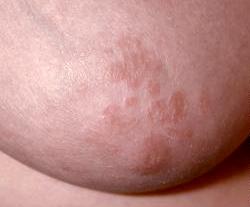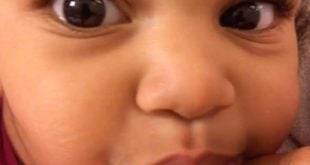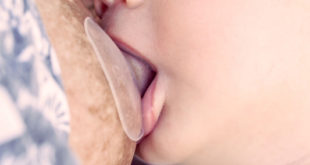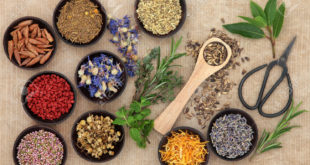Ask Anne…
 Question: I have recently developed eczema on my breasts. It itches a lot and has made my nipples sore. My dermatologist just started me on a topical cream. When she latches on, it itches, and I’m worried that the breastfeeding is irritating it and making it worse. Is this unusual?
Question: I have recently developed eczema on my breasts. It itches a lot and has made my nipples sore. My dermatologist just started me on a topical cream. When she latches on, it itches, and I’m worried that the breastfeeding is irritating it and making it worse. Is this unusual?
Answer: Eczema on the nipples is not uncommon. It often shows up after several weeks or months of nursing and not in the very beginning. If a yeast infection has been ruled out (the symptoms, like soreness and itching, are often similar), then treatment with a steroid ointment is often effective. If your doctor has just prescribed the ointment, then I would suggest giving it time to work. If it seems to be helping, then keep using it once a day and then taper off to once every other day for a week to keep the symptoms from reoccurring.
Other methods to control eczema include not washing the nipples often, using as little soap as possible, exposing the nipples to air or sunlight, keeping them dry, avoiding rough fabrics against the breast, and avoiding the use of perfumes or laundry detergents.
The fact that your nipples stay moist and that the baby is putting stress on them every few hours doesn’t help the situation. Try to wear disposable pads and change them often, and use the comfort measures described in the article Sore Nipples to minimize the discomfort while the eczema is being treated. These include wearing breast shells, getting the milk to let down before you start nursing, and nursing on the least sore side first.
Sometimes nursing mothers have a combination of eczema and yeast at the same time. If the rash and itching don’t respond to the steroid medication your dermatologist prescribed , then that option needs to be explored. The most effective treatment I’ve found is Dr. Jack Newman’s nipple ointment. Mix an anti-fungal cream (I recommend Nizoral, but you can also use a combination of Nystatin (100,000 units/ml, 15 gms) and Clotrimazole (10% cream, 15 gms). These are anti-fungals to treat the candida. In addition, the cream contains Mupricon (antibiotic – 2% ointment, 15 gms) and Betamethasone (cortocosteroid to decrease inflammation -0.1% ointment. 15 gms). In his , Dr. Jack Newman’s Guide to Breastfeeding, pp.108-109, he recommends applying the ointment after each feeding and not washing it off. You gradually cut back on the applications as the pain disappears.
Anne Smith, IBCLC
Breastfeeding Basics
 Breastfeeding Basics
Breastfeeding Basics



